
|
.
|
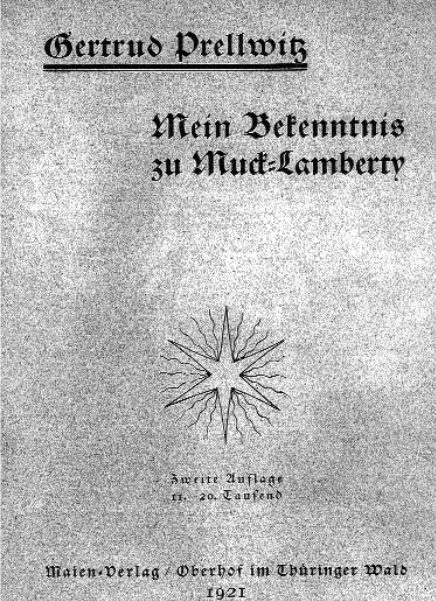 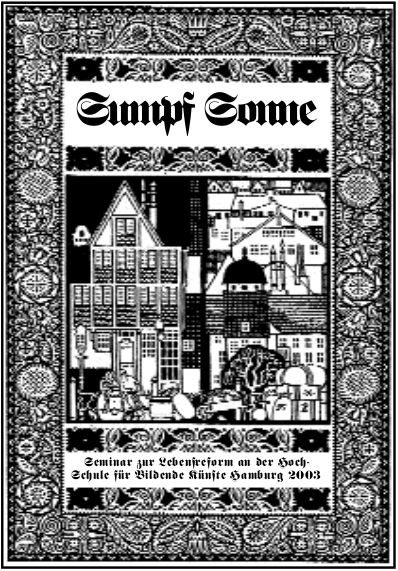 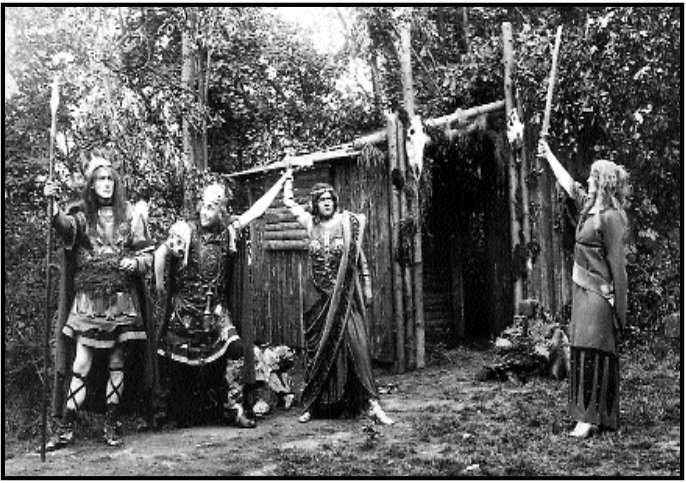  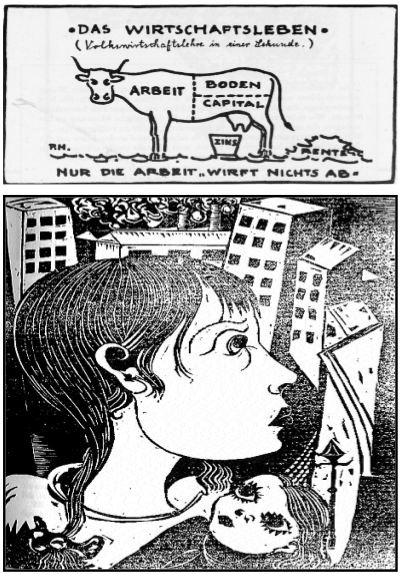  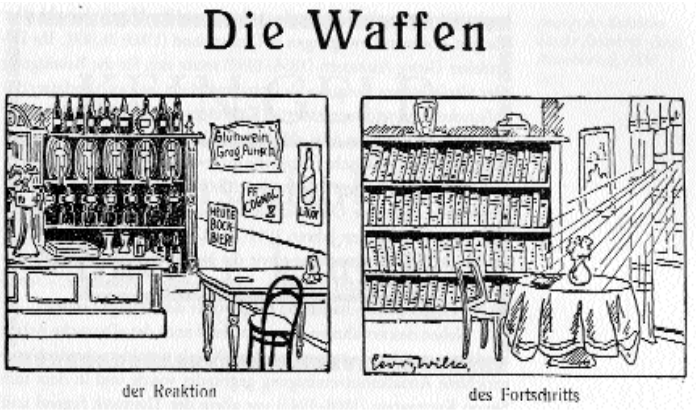 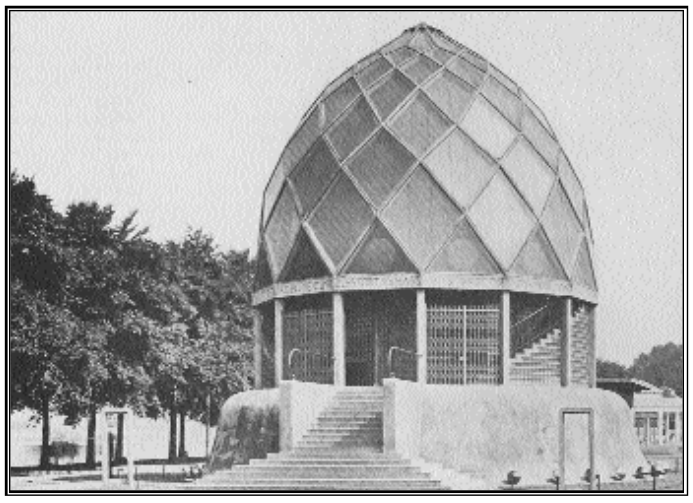 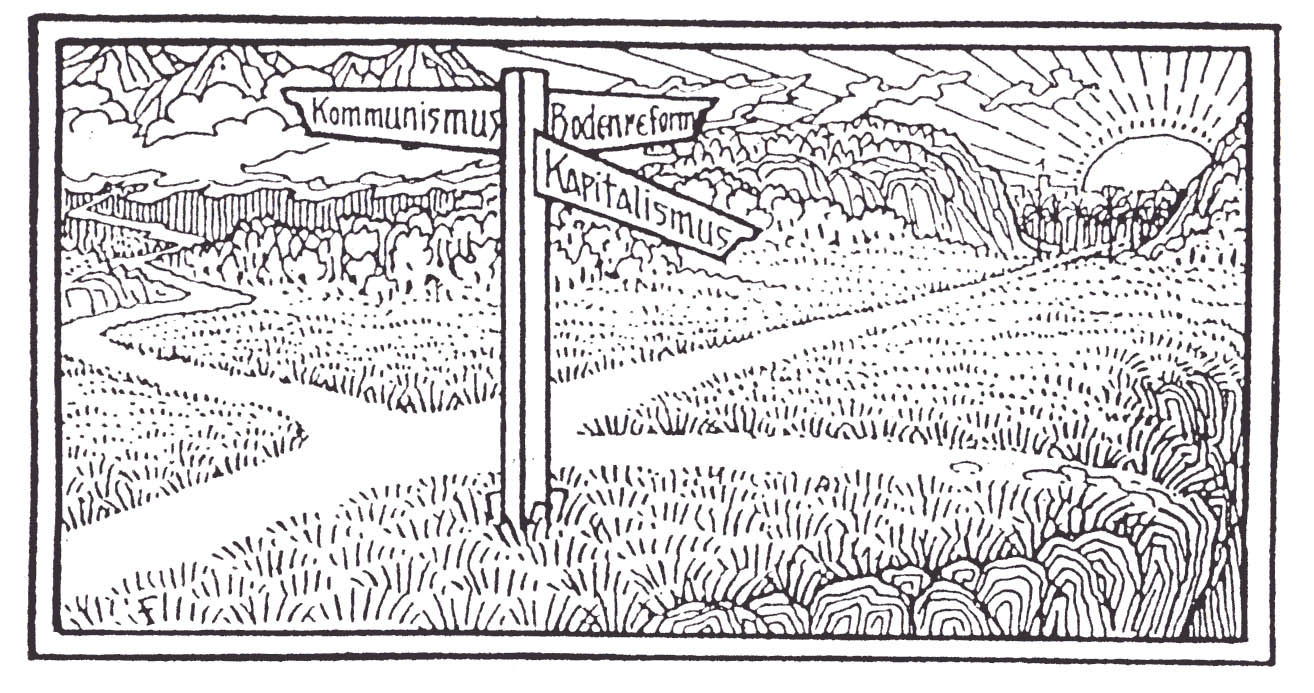 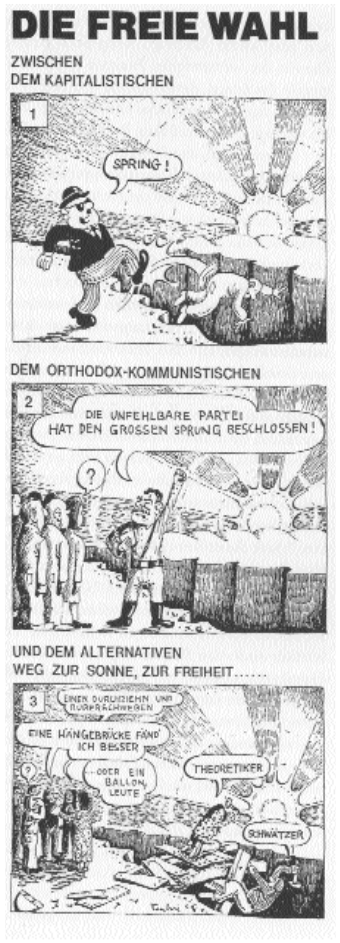 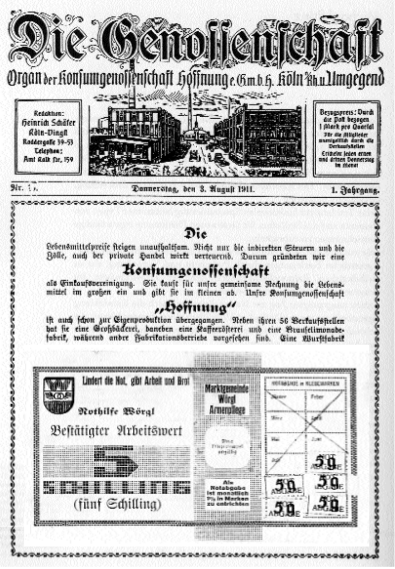  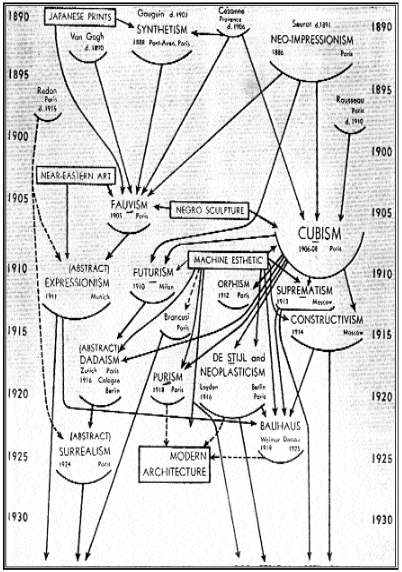 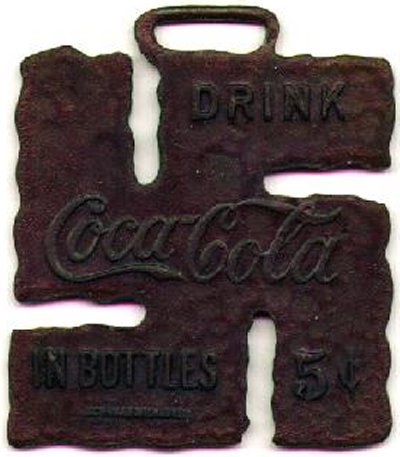 Interview by Gardar Eide Einarsson and Mathias Faldbakken for UKS Forum for Samtidskonst, Oslo, Summer 2003 Matias Faldbakken: On the webpage from your seminar in Hamburg [1] you mention the names of various Lebensreform movements (Monte Veritá, Vagabundenbewegung, Wandervogel, Völkische Bewegung). Could you tell us a little about some of them and their origin -if they had different agendas or a more unified tactic regarding how to reform or escape the constraints of the Order of the Day? Stephan Dillemuth: The term Lebensreform (Life Reform) originated in the mid 1890's for attempts to renew the whole conduct of life, especially in the spheres of nutrition, clothing, dwelling and health. More particularly, you could notice movements like those that were anti-alcohol, anti-inocula- tion, anti-vivisection. In general, any kind of attitude against established constrictions of society. In view of the development of "multitudes" of parallel conceptions of life, the Life Reform movements were certainly predecessors of today's "escapist" constructions of identity, formed via lifestyle conceptions. Gardar Eide Einarsson: What was it specifically about the historical situation at this time that laid the ground for the Lebensreform movements? SD: Around 1900 it was really "Old Europe", the ruling monarchies were overaged and ossified, unable to cope with the changes that capitalism demanded of them. Due to the heavy industrialization, a lot of people moved from the country to the big cities and found themselves exposed to the excesses of capitalism, environmental problems and overpopulation. Even though the working class became more and more organized and modest betterment was on its way, social progress stagnated. It appeared to many that this society was rotten and stuck in the hollow representation of power... Especially the intellectuals and the lower middle classes experienced this situation as a crisis, where a two class system was imminent. Here people started breaking out of the rigid structures, looking for what seemed to be original, natural and spiritual in culture, mind and body . Health became the big topic, however it was very often used in an anti-modernist way. Hygiene, clothing, naturopathy, nutrition and the reform of dwelling places became the issues. GEE: So the Lebensreform comes to occupy some kind of grey area of ecumenical politics then, a response to dissatisfaction with the burgeoning era of modern(ist) capitalism. Lebensreform intended to deliver both the social(ist) happiness that industrialization failed to bring, as well as the mysticism that disappeared with the previous era. SD: I would not call it ecumenical politics, that sounds as if there were a concept of a conciliatory nature. Just the opposite - in the background to all these partially utopian, revolutionary, reactionary and reformist attempts to break free from the Empire of the day (the national, capitalistic and mono- lithic Wilhelminian Reich) was an absolute faith in the nature of each particular attempt. So there was a certain kind of chiliasm, the expectation of redemption through... whatever branch of Lebensreform you were involved with... anti-alcoholism, veganism, settler- or youth-movement. But this also has to be seen as growing out of widespread dissatisfaction, and the experience of a crisis, alongside cultural pessimism (on the right) and social struggle (on the left). Although the Lebensreformers, even those who were self-described Anti- Semitists and Anti-Feminists, would have thought of themselves as being non-political - they were drawn to utopian socialism on one side and to a dark nihilism and esoterics on the other - they were nonetheless also used for these politics, especially by the right. That is still so annoying - that these self proclaimed 'apolitical' people - yes, also artists - never see the political effects of their oh so 'apolitical' statements. Or, as Rembert Hüser, poignantly puts it: 'What the rightists do, they call 'culture', what the leftists do, they call 'politics''. [2] GEE: That is very similar to Chantal Mouffe saying that art has no choice but to be political, either by challenging hegemonic formations or by reinforcing them (by taking an "apolitical" stance). SD: If I understand it correctly, the writer Ulrich Linse claims that the last time that capitalism was under heavy attack from three sides was between 1905-1925: The socialist revolution against private ownership of the means of production, the anarchist rebellion against any kind of hierarchy, bureaucracy and administration, and the völkische condemnation of industrialization, with their idea of a craft oriented and rural society organized in tribes and guilds. MF: Under what circumstances did you start looking into the Lebensreform movements? SD: A trigger for my interest in the Lebensreform movements was the research project that I conducted at Kunsthøgskolen i Bergen. This was the attempt to map a shift in the idea of the public sphere induced by a corporate world economy, and the way in which this shift seems to go hand in glove with a different function for art, and with a different conception of the role of the artist in the society created by this 'new' world economy. Or, as Simon Sheikh puts it: "Instead of one public sphere we have to see fragmented formations that sometimes connect, sometimes close off, and that are in conflictual and contradictory relations to each other." [3] After I moved back to Germany I got interested in the precursors of these phenomena. GEE: Earlier you talked about Lebensreform as a reaction to ‘tight morals’. Maybe you could talk a little about the sexual (liberation) aspects of the Lebensreform. There is obviously this return to the presence of the physical body, nudism etc and it all happens parallel to Freud's development of the theory of psychoanalysis and investigations like Krafft-Ebing's "Psychopathia Sexualis". SD: You can observe this liberation in all of these groups, but it was very shy and careful, almost tenderly hidden. The 'Lichtbadeanstalten' (nudists camps) had fences around them, the homo-erotic tendencies in the Wandervogel were only openly discussed within the movement after 15 years or so. It is interesting to see how a self determined and high moral codex came alongside the liberation. However, in a scientific and socially engaged context, the discussions about hygiene, contraception, abortion, nutrition, reform-wear etc were moving quite fast. GEE: In the interview that Mary Zournazi does with Ernesto Lauclau and Chantal Mouffe, they talk about the importance of hope as a political factor. Can you talk a little bit about how the Lebensreform move- ment channelled the hopes of the middle class and how it was possible for that hope to be kidnapped/channelled into Nazism? SD: "Hope is the name you give to the breeding sites on the twenty-third floor, where the robots are programmed with the promises made by the system." [4]. I would not use 'hope' too much for the Lebensreform either, but rather refer to two constructions: the experience of an existential crisis, as a trigger, and the expectation of redemption. Chiliasm, as I mentioned it above. But in order to get there you REALLY have to DO IT and take ACTION, in a very dedicated way. This is an unconditional concept, 'The Propaganda By Deed". It was developed in the 1870's by the anarchists who used bombings and assassinations to provoke upheaval. The bombings did not result in the desired uprising of the workers but in the opposite: the workers turned against someone they viewed as a murderous fanatic and also, as we see it now and again, the fear and anger can be easily directed against minorities or critics. Further, it has always given governments licence to introduce more oppressive laws. GEE: What was the relationship between Lebensreform and the increasing amount of non-work leisure time? SD: Unemployment was a big threat that added to the experience of crisis, especially in the times of inflation and depression after WWI. There was a high percentage of homeless people and vagabondage and there were also a lot of artists and intellectuals amongst them. Gregor Gogs - 'League of the Homeless' - saw a big revolutionary potential in that high figure of vagrancy. But economically, most of the Lebensreform were engaged in finding a third way, anyway, between the two others possibilities, communism and capitalism. To mention here various "alternative" initiatives, like founding settlements and cooperative societies, experiments with barter, money, communal land ownership. MF: Could you explain a bit more about Silvio Gsell and his idea about introducing a tax on the use of money? Does it, to your knowledge, have any link/similarity to the Tobin-tax and ATTACK? SD: The idea of Freiland/Freigeld (free land, free money) suggested that land should not be owned by anyone, it should be available for rent only. Education and social institutions should be maintained with the money that resulted from renting the land to whoever needed it (priced by supply and demand). Gsell did not locate the problem of capitalism in the ownership of the means of production (that's why Marxists hate him) but in the monetary system: in the fact that you make money with money. In order to use money merely as an abstract means of exchange that should circulate in a fast and non-inhibited manner, he suggested interest-free money, i.e. if you take it out of circulation it loses value. Some of Gsell's ideas were tested in practice and they succeeded, until the state claimed back its monopoly of the mint. MF: Are any of the Lebensreform movements still operative today, or are there any contemporary movements that in/directly draw on the heritage of the Lebensreform movements? SD: I am a vegetarian, a nudist and a teetotaller. I listen to straight edge music, I am a member of a Local Economic Trade System and I am associated with the Black Bloc. Does that answer your question? MF: "Lebensreform, Lifestyle and Revolution": The relationship between revolution, "life style" and pure escapism seems to be sort of central to the mentality of some of today's neo-activist movements (i.e. the CrimethInc Collective and such), which again are ideologically in opposition to the commodified versions of the very same phenomena (r/evolution (technological), life style (fashion) and escapism (entertainment)). How do you go about (defining) these terms when dealing with your Lebensreform-research? SD: I have not heard of CrimethInc, probably because they are against commodified versions of themselves. But lifestyle? Just remove the packaging [5]: VALS Trademark - short for values and lifestyles - is a marketing and consulting tool that helps businesses worldwide develop and execute more effective strategies. The system uses psychology and identifies current and future opportunities by segmenting the consumer marketplace on the basis of the personality traits that drive consumer behavior. The original VALS system was built by consumer futurist Arnold Mitchell to explain changing U.S. values and lifestyles in the 1970's. VALS not only distinguishes differences in motivation, it also captures the psychological and material constraints on consumer behavior. Consumers buy products and services and seek experiences that fulfil their characteristic preferences and give shape, substance, and satisfaction to their lives. A basic tool of the VALS program a typology which is divided into four major categories, with a total of nine lifestyles. These are: Need-Driven (Survivor lifestyle, Sustainer lifestyle), Outer-Directed (Belonger lifestyle, Emulator lifestyle, Achiever lifestyle) Inner-Directed (I-Am- Me lifestyle, Experiential lifestyle, Societally Conscious lifestyle), Combined Outer- and Inner-Directed (Integrated lifestyle)... MF: So such a mix of hardcore consumer survey and almost esoteric fortune telling that VALS offer enables business to constantly be able to satisfy the "Lebensreformists urge" of the ever-expanding and increasingly excessive middle class...? SD: I don't know if this is just a middle-class problem. The film 'The Century of the Self' by Adam Curtis shows convincingly how the corporate world made use of Freud's discoveries from very early on and shifted western societies from need driven to desire driven consumption. Identity today is established by the act of consumption and for us couch potatoes there is not much to do than to choose, to buy, to use. Back then, 'Lebensreform' originated from an unconditional search for the way out of a stuffy climate. That means, 'Lebensreform' was not something to be consumed, it had to be made, it was production. A production against the advance of capitalism. MF: In an interview with Jacob Fabricius you mention that some of the Lebensreform movements "lent a sense of metaphysical depth to the arising National Socialism", while others were being persecuted by the Third Reich. Do you think - similarly - that "innovative" artistic, transgressive or revolutionary practices of today stand in danger of fuelling the corporate machinery or industry of innovation? And are there any contemporary similarities to the persecution/restriction which Lebensreform experienced? SD: I do not want to equate the Third Reich with the corporate world in spite of their totalitarian tendencies. But generally speaking, every innovative practice can be appropriated by consumerism, corporations, individuals and left and/or right politics. Even more so if, as in the case of the Lebensreform (and some contemporary art), one maintains an ambivalent or indifferent attitude to politics. But the first question becomes how identity can be constituted through production against consumption, secondly, how to control and/or directed this production and finally if identity is necessary to do that or if identity has to be a necessary result of that process. GEE: Like in the slogan from May 68': "Co-optation, the trap of nerds". What was the relationship between Lebensreform and hippie-ism and then later the kind of soft-hippie ideals that became part of Scandinavian social democracy? SD: In our Western societies there is hardly any pressure or necessity to work against something that is -in the end- quite convenient. As lifestyle suggests, these escapist, radical or alternative things can be bought as temporary, fashionable offers for identification. GEE: Yes, yes, but I was really thinking that it might make some sense to tie these movements explicitly to later "alternative" versions. If the Lebensreform has been running as some kind of "alternative" for a while, then it is perhaps interesting to know to what extent it has altered mainstream politics and ways of living, and to what extent it has continued as a perpetual, outside parallel. SD: Before WWII, the reform aspect of 'Lebensreform' was hardly associated with Social Democracy, and more with communism, anarchism or with the völkische movement. Finally the Nazis forced all of that back into line, into their homogenized, hierarchical, Aryan system. But since the US had been a homestead for victims of religious persecution and utopian communities, the 'repressed' came back to Europe in the 1960's via the USA: science fiction literature, pop culture and protest. When the revolutionary (communist?) upheavals in Europe and the US failed in the late 1960s, the more völkische (?) 'inner way' and the anti-anarchist 'march through the institutions' began. The former brought an advance of the "fantasy" genre against "science fiction", and the latter brought an update to social democracy. Ok, and now we laugh when we read that Tony Blair and his wife, Cherie, went through a "rebirthing ritual" in 2001 [6]. But isn't that quite easy and a supercilious laugh? Whilst the Lebensreformers were reforming their anti-capitalist life and the communists fought the social democrats as their worst enemy... Hitler rose to power, changed the laws, armed the forces, forced rhetorics. Could we see similar motives today? That the international security issue is such a driving force, that the focus group type politics has moved on to pre-emptive levels of a scale beyond just being able to categorize people and then make micro-policy in response to what they say. What is the current level of macro-policy, or meta scale politics, responding to within our shrivelled democracies? How is it re-defining the relationship between state and business, the globalization in the 'mondalisation', the role of the masses in this new stage of 'mass democracy'? I don't know myself, of course - I wonder, for example, about the dangers of a new European constitution creating, amongst other things, a military force in a knee jerk response to the US imperialist use of military power. In reference to the recent discussion about the Trotsky-ist roots of neo-conservative think-tanks in the US, Robert Misik points out [7] that their spokesmen adopted the idea of a 'permanent revolution' for aggressively promoting their 'permanent counter-revolution' ...and the revolutionaries of 1968 are put into defense, to protect the status quo. Within the last 2 years we realized that there is more behind capitalism than just the mere greed of the corporations. It is a new 'will to power' and a neo-conservative ideology that is geared, just like back then, precisely against the liberties that resulted from the 'hippie-life reforms' in the 1960's and 1970's and which ended in capitalism-light, or, as you could say, as soft-hippie ideals in Scandinavian social democracy. MF: You call the Lebensreform movements "utopian, revolutionary, reactionary and reformist approaches" which makes me think of the Unabomber/Ted Kaczynski, who also had this combined revolutionary/reactionary approach. Was the resort/return to agriculture and craft and other "healthy" social orders the basic idea of most Lebensreform movements? SD: Yes, you could say so, but that happened after the phase of anarchist 'propaganda by deed' had failed due to the increased use of dynamite [8]. But back then the battle for a progressive society continued and especially the interest in housing and in the design of healthy environments became the cradle for modernism. Osthaus and Behrens founded the "Deutsche Werkbund" to improve design, craft, industry, display and advertising. Some architects who engaged in a secret exchange of letters (Gläserne Kette) were Gropius, Scharoun, Finsterlin and Taut. And also some anarchist intellectuals were sympathetic towards the Lebensreform, like Erich Mühsam, who suggested, after a visit to Monte Veritá, that it should be turned into a refuge of all sub-proletariat, petty criminals, victims of state persecution, vagabonds... Footnotes: 1 http://lebensreform.societyofcontrol.com 2 'Corporate Rokoko and the End of the Civic Project' http://societyofcontrol.com/research/e_fohr_b.htm 3 Simon Sheikh in his statement to announce the seminar 'In the Place of the Public Sphere' held at the Art Academy Odense, Denmark, 2002 4 'Improvisations on the Bassoon' http://societyofcontrol.com/delmont/e_delmont_b.htm 5 http://www.societyofcontrol.com/ppmwiki/pmwiki.php/Main/ValuesAndLifestyles 6 'Primal therapy - Crackpot touchy-feely manipulation have replaced reason and ideas in modern politics' by Nick Cohen in The Observer, Sunday 2002-03-02 http://media.guardian.co.uk/overnights/story/0,7965,669578,00.html 7 The German taz # 7081 / 18.6.2003 / page 15 http://taz.de/pt/2003/06/18/a0169.nf/text 8 'It may be as well to point out here that the dynamite policy has nothing to do with Anarchy' 'A Handbook of Anarchy' J.A. Andrews, 1894 http://takver.com/history/raa/raa19.htm Interview by Gardar Eide Einarsson and Mathias Faldbakken for UKS Forum for Samtidskonst, Oslo, Summer 2003 -Thanks to Josephine Pryde for her contributions to this text.- |